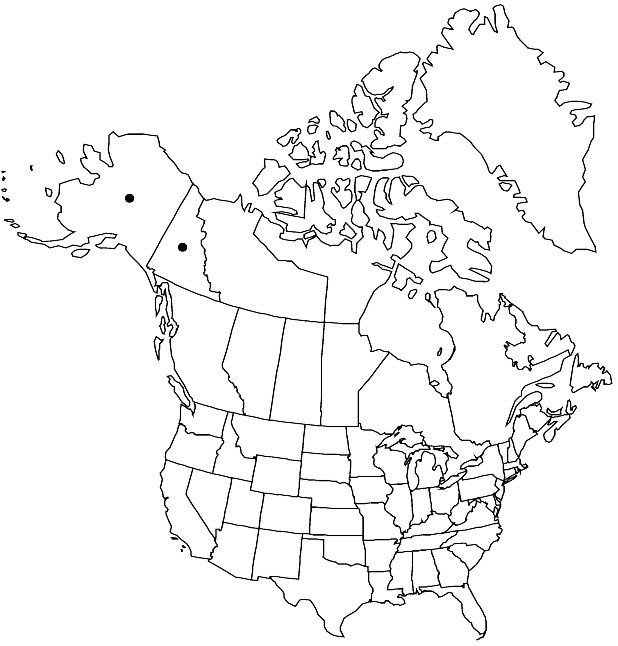Draba murrayi
Canad. J. Bot. 57: 1874. 1979.
Perennials; (cespitose); caudex often branched (covered with persistent leaves or leaf remains, branches sometimes terminating in sterile rosettes); not scapose. Stems unbranched, (0.4–) 0.9–2.7 (–3.5) dm, pubescent proximally, glabrous distally, trichomes simple, 0.2–1 mm, and often smaller, fewer short-stalked, 2–4-rayed ones. Basal leaves rosulate; petiolate; petiole (0–0.7 cm), margin ciliate; blade oblanceolate to obovate, (0.3–) 0.6–2.1 (–2.8) cm × (1.5–) 2.5–5 (–9) mm, margins entire or sparsely denticulate, (ciliate, trichomes simple, 0.2–1.1 mm), surfaces pubescent with stalked, cruciform, and 2-rayed or 3-rayed trichomes, (rays sometimes spurred), 0.1–0.6 mm, sometimes mostly simple trichomes adaxially. Cauline leaves 1–6; sessile; blade ovate or oblong to lanceolate, margins usually entire, rarely sparsely denticulate, surfaces pubescent as basal. Racemes 7–25-flowered, ebracteate, elongated in fruit; rachis not flexuous, glabrous. Fruiting pedicels divaricate-ascending, usually straight, rarely curved, (4–) 7–18 mm, glabrous. Flowers: sepals ovate, 1.5–2.2 mm, pubescent, (trichomes simple and short-stalked, 2-rayed); petals white, obovate, 4–6 × 1.5–2.5 mm; anthers ovate, 0.4–0.5 mm. Fruits linear-lanceolate to narrowly elliptic, plane, flattened, 5–13 × 1.5–2 mm; valves glabrous; ovules 20–30 per ovary; style 0.6–1.5 mm. Seeds oblong, 0.9–1.2 × ca. 0.5 mm. 2n = 48.
Phenology: Flowering Jun–Jul.
Habitat: Rock outcrops and talus, open forests, dry slopes, alluvial gravels
Elevation: 150-900 m
Discussion
Of conservation concern.
Selected References
None.
Lower Taxa
"elongated" is not a number."thick" is not a number."dm" is not declared as a valid unit of measurement for this property."dm" is not declared as a valid unit of measurement for this property.
